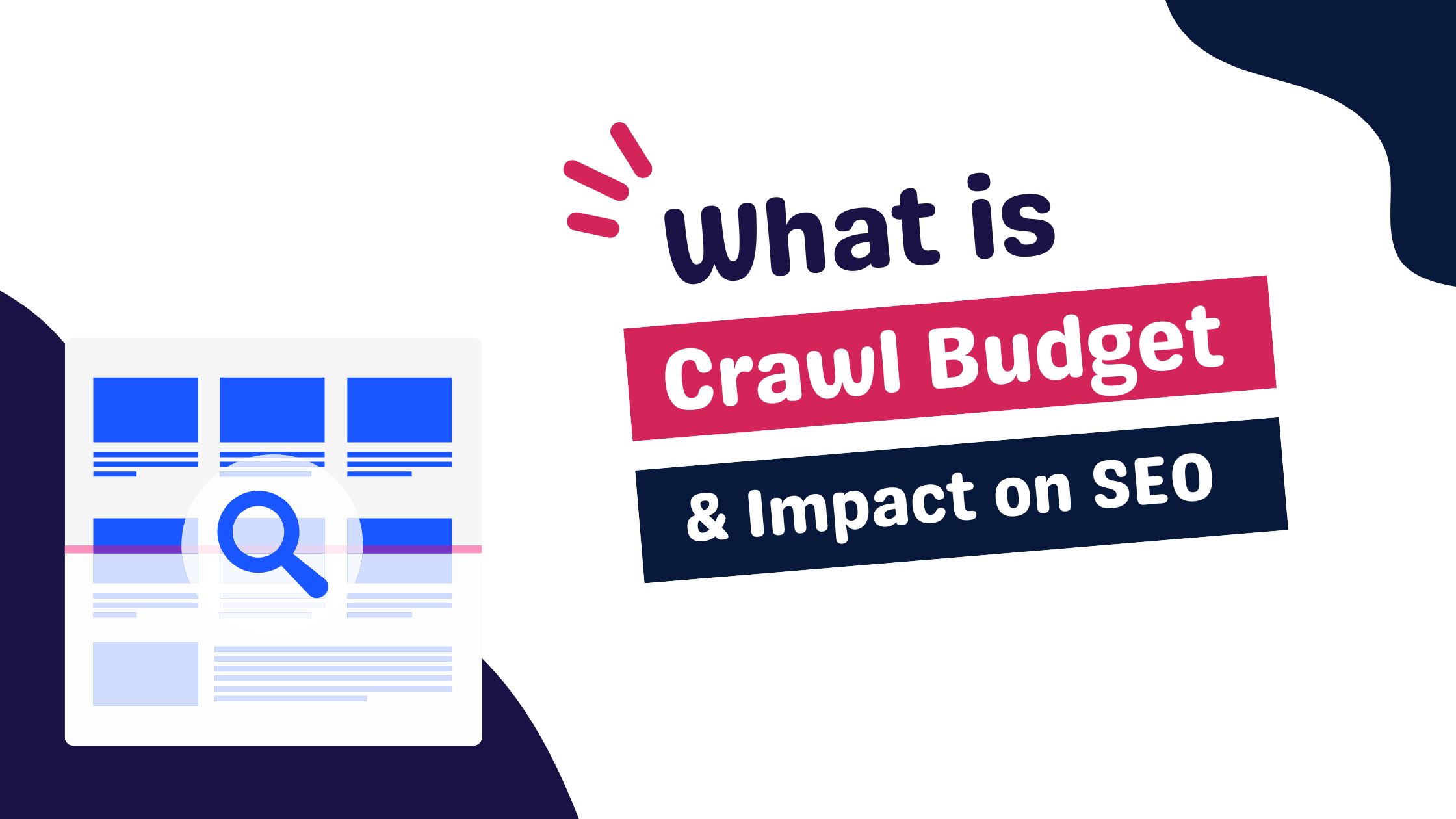Harnessing the Power of Algorithms: What are Algorithms in Marketing?
Algorithms in marketing are essentially sets of instructions that help sort, filter, and deliver content in a way that is most likely to be relevant to you, the consumer. They analyse your past behaviour, predict what you might like next, and serve up the most pertinent websites, articles, products, or videos. However, these algorithms are in a constant state of flux. Just like fashion trends that come and go, the rules that drive algorithms are frequently updated. This is both a challenge and an exhilarating aspect of digital marketing. As a seasoned professional in this field, I’ve learned that flexibility and adaptability are key. When an algorithm changes, the marketing strategies we’ve carefully crafted must change as well. It’s a dance of sorts, one where the steps are always evolving, and keeping in rhythm means paying close attention to the latest moves.
The Impact of Algorithms in Marketing.
What comes to mind when you hear the term “algorithm”? For many, it may evoke images of complex mathematical formulas or computer scientists at work. However, in the world of marketing, algorithms are much more relatable and far-reaching in their impact. Think of them as the silent puppeteers of the digital world, pulling strings behind the scenes to present you with choices that feel almost magically tailored to your tastes and interests.
Throughout this article, we will look into the role of algorithms in marketing, simplifying the complexities into clear, actionable insights. Whether you’re new to digital marketing, looking to refresh your knowledge, or just simply learning about algorithms, understanding them and their role in digital marketing platforms is crucial for navigating the online marketplace effectively.
How do Algorithms Work?
When you enter a search term into a search engine like Google or type a query into YouTube, you set off a complex chain reaction that’s guided by algorithms. These algorithms act as meticulous librarians who sift through endless digital shelves of information to find exactly what you’re looking for.
Let’s use Google as an example. You’re planning a garden party and you type in “best outdoor party lighting.” The moment you hit ‘search,’ Google’s algorithms jump into action, analysing your keywords against countless web pages. They consider factors like the relevance of a website’s content to your search terms, the quality of information, user engagement, and even the site’s technical performance. The end goal? To provide you with a list of results that are ranked by how useful they will likely be for your query.
YouTube’s algorithms work on similar principles when you search for a video. They not only look at the relevance of your keywords but also factor in your past viewing history, what other viewers have watched, and how they interacted with various videos. So, if you search for “DIY party decor,” YouTube might suggest a video that’s been highly rated by viewers with similar interests, or one from a channel you’ve watched before.
Imagine you own a company that sells party supplies. You want your product—the latest string lights—to show up as a top result when someone searches for party lighting. Understanding algorithms means you can optimise your website or your YouTube channel’s content to align with what these algorithms are looking for. This might involve using specific keywords, creating engaging content, or ensuring your website loads quickly and looks great on mobile devices.
In the digital marketing world, we call this Search Engine Optimisation (SEO) for websites and Video SEO for platforms like YouTube. By mastering these optimisation techniques, marketers ensure that when the algorithms get to work, their products and services take centre stage.
Algorithms and Search Engine Optimisation (SEO).
At the heart of digital visibility lies Search Engine Optimisation (SEO), a marketer’s toolkit for aligning content with the intricate workings of search engine algorithms. These algorithms are tasked with a monumental job: to crawl, index, and rank billions of web pages in order of relevance and authority for every possible search query.
For marketers, SEO is like a compass guiding potential customers to their digital doorstep. It involves crafting website content that resonates with both algorithms and humans. This means not only including the right keywords but also ensuring that the content is informative, engaging, and trustworthy. Additionally, factors like site speed, mobile-friendliness, and user experience play a crucial role in a website’s SEO success.
Take, for instance, the Google My Business algorithm. For local businesses, this is a crucial aspect of SEO. It governs how businesses appear in local search results and Maps, influencing a brand’s local digital presence profoundly. When you search for services “near me,” Google’s algorithm takes into account the relevance of a business to your search, its distance from your location, and the prominence of the business online, which includes Google reviews, local citations, and listings.
For a local restaurant looking to be discovered by new patrons, optimising their Google My Business listing is essential. This includes verifying their listing, ensuring their business information is accurate and comprehensive, encouraging customers to leave positive reviews, and responding to those reviews. These actions signal to Google’s algorithm that the restaurant is a credible and relevant choice for searchers, thereby improving its visibility in local search results.
Understanding and leveraging SEO, especially nuances like the Google My Business algorithm for local SEO, can dramatically increase a website’s traffic and, by extension, the business’s potential for sales and growth. It’s a fine balance of technical know-how and quality content creation, and it’s where the art and science of digital marketing come together.
Social Media Algorithms.
The landscape of social media is continually shaped and reshuffled by algorithms. These behind-the-scenes formulas are what determine which posts and ads you see on platforms such as Facebook, Instagram, X, and LinkedIn. Their ultimate goal is to keep users engaged and active by curating content that is the most likely to interest them.
For businesses, this means that understanding and adapting to these algorithms is essential for ensuring their content reaches their target audience. Each social media platform has its own set of rules and behaviours for its algorithm, but they all prioritise engagement—a measure of how individuals interact with content.
Engagement can include likes, comments, shares, and the amount of time spent viewing a post. High engagement sends a signal to the algorithm that the content is valuable, prompting the platform to show it to more users. Therefore, creating engaging content that resonates with the audience is key. This could mean leveraging trending topics, engaging in conversations with followers, or using multimedia such as videos and images to make content more attractive.
When social media platforms update their algorithms, it can cause significant changes in how content is distributed and seen. Businesses need to stay agile, often adjusting their social media strategies to maintain or enhance their content’s visibility. This might involve analysing performance metrics to understand what type of content performs best, experimenting with different posting times, or investing in paid advertising to ensure visibility despite algorithmic changes.
For example, if a platform changes its algorithm to prioritise video content over text, a business should consider increasing its production of high-quality video content tailored to their audience’s interests. By doing so, they align their strategy with the algorithm’s preferences, which can lead to better engagement rates and more substantial reach on that platform.
Navigating social media algorithms requires a blend of creativity, strategic planning, and a keen eye for data-driven insights. For businesses, staying informed about these algorithms and flexibly adjusting their tactics is not just beneficial—it’s a necessity in a digital environment where visibility is governed by ever-evolving codes.
Algorithms for Video Streaming Services.
Algorithms on video streaming platforms, particularly on sites like YouTube and Vimeo, play a pivotal role in orchestrating the user experience. These algorithms are adept at learning user preferences through their viewing history, search queries, and interaction with content—such as likes, shares, and the amount of time spent on a video. By analysing these behaviours, the algorithm curates a personalised stream of video suggestions designed to keep the user engaged and entertained.
For content creators and advertisers on YouTube, these algorithms are both a challenge and an opportunity. The challenge lies in understanding and aligning content strategies with how the algorithm works, to ensure that their videos are seen by the largest possible audience. The opportunity comes from the potential reach that optimised content can have, given that a favourable algorithmic evaluation can catapult a video to viral status.
Optimising video content for better visibility starts with understanding the factors the algorithm favours. Keywords in the video title, description, and tags are crucial, as they help the algorithm understand and categorise the content. High-quality content that engages viewers right from the start and keeps them watching is also favoured, as YouTube’s algorithm particularly values watch time and engagement metrics.
Thumbnails and video previews are another important aspect, as they are the first thing a potential viewer sees. An eye-catching thumbnail can significantly increase the click-through rate of a video, further signalling its relevance and quality to the algorithm. Moreover, encouraging viewers to subscribe, like, and comment can foster a community around the content, further boosting its algorithmic appeal.
Content creators and advertisers must also keep abreast of changes to the algorithm, which can shift the tactics needed for optimization. For example, YouTube has at times altered its approach to prioritise longer-form content or to reduce the visibility of what it deems ‘borderline’ content.
Understanding and leveraging these algorithms is a dynamic process that requires creators and advertisers to consistently produce high-quality content, analyse performance metrics, and engage with their audience. Doing so can lead to greater visibility, higher engagement, and ultimately, a more successful presence on the platform.
The Use of Algorithms in Content Personalisation.
Content personalisation is a testament to the sophisticated use of algorithms by streaming services to enhance user experience. These platforms deploy complex algorithms that analyse vast amounts of data to offer tailored recommendations, aiming to present viewers with content that resonates with their preferences and viewing habits. By examining past interactions with content—such as watches, searches, and ratings—streaming services can predict what a viewer may want to watch next, making the discovery of new shows and movies almost effortless.
Personalised content has a profound effect on viewer retention. When viewers are presented with content that aligns with their tastes, they’re more likely to engage for longer periods. This consistent engagement creates a positive feedback loop; the more a viewer watches, the more data the algorithm has to refine future recommendations, further increasing the likelihood of retention.
Netflix and Disney+
A good example of personalised streaming that many people use on a daily basis is services such as Netflix and Disney+. These services are at the forefront of employing algorithms for content personalisation, transforming the way we consume media. Netflix, with its vast repository of user data, utilises sophisticated machine learning algorithms to not just recommend individual titles, but to tailor entire viewing experiences. These algorithms take into account a multitude of factors—what you’ve watched and enjoyed, how you’ve interacted with the service, the time you watch, and even how you rate and browse titles. This data-driven approach allows Netflix to present highly individualised ‘shelves’ of content, each arranged to cater to the viewer’s specific tastes.
Personalisation by these services also shifts the marketing paradigm from a broad, demographic-based strategy to a more nuanced, preference-driven approach. It recognises the individuality of each viewer, stepping away from the one-size-fits-all model of yesteryears and moving towards a more curated, personalised experience. This not only helps in viewer retention but also opens up new avenues for content monetisation, partnerships, and cross-promotional strategies that are tailored to individual viewing habits.
Personalised Content for Marketers
For marketers, personalised content opens up unique opportunities to place their products or services in front of the right audience. With streaming services offering ad-supported tiers or in-video product placements, marketers can leverage the algorithms’ knowledge of viewer preferences to target their campaigns more effectively. This targeted approach ensures that marketing efforts are not wasted on disinterested audiences, but are instead focused on viewers who are more likely to have an interest in what is being promoted.
Moreover, personalised content allows for subtler marketing techniques, such as native advertising, where products or services are woven into the content itself. When done skillfully, this can enhance the viewer’s experience by adding relevance and value, rather than being a disruption.
Streaming services’ algorithms have also spurred innovation in marketing analytics. By analysing how viewers interact with personalised content, marketers can gain insights into consumer behaviour, preferences, and trends. This data is invaluable for designing future marketing strategies that are not only responsive to current viewer demands but also anticipatory of future interests.
Content personalisation via algorithms is not just shaping the future of entertainment; it’s also reshaping the landscape of marketing. By creating more engaging viewer experiences and offering precise targeting capabilities, algorithms are providing a win-win situation for both streaming services and marketers.
Email Marketing Enhanced by Algorithms.
Algorithms have quietly transformed email marketing into a data-driven art, empowering marketers to customise and automate campaigns with incredible accuracy. Through the meticulous analysis of consumer data, these algorithms allow for the creation of targeted emails that speak directly to the interests and behaviours of different customer segments.
This personalised approach is made possible by algorithms that parse through a variety of customer interactions—previous purchases, email engagement, site navigation patterns, and even cross-platform digital behaviours. By segmenting the audience based on these interactions, marketers can tailor messages to match the distinct preferences and requirements of each group, making every communication feel personal and relevant.
The sophistication of these algorithms extends to the optimisation of email delivery. They can discern the most opportune moments to send emails to maximise engagement, learning from each interaction to refine their predictions. As a result, the timing and frequency of emails are uniquely adjusted for each segment, enhancing the effectiveness of marketing campaigns.
Content personalisation also plays a pivotal role. Algorithms can incorporate individual user data, such as unpurchased items in a shopping cart or previously browsed products, into emails, often with incentives like limited-time offers to prompt action. The email content itself can be dynamically adjusted to highlight new products or promotions that align with the customer’s purchasing history.
The effects of leveraging algorithms in email marketing are profound. Personalisation drives higher open and click-through rates, as customers are more inclined to engage with emails that reflect their interests. This personalised touch not only boosts customer satisfaction but also cultivates brand loyalty and can significantly increase conversion rates.
For businesses, the advantage of these targeted, data-driven campaigns is the efficiency of resource allocation. Rather than casting a wide net with a generic message, each email is crafted to appeal to a specific audience, enhancing the likelihood of achieving the desired response and ensuring a more fruitful investment in marketing efforts.
In essence, the utilisation of algorithms in email marketing represents a shift towards a more strategic and effective form of customer engagement. By harnessing the power of data for segmentation and personalised communication, companies can now connect with their audiences on a more meaningful level, nurturing a more engaging and profitable relationship with each email interaction.
Online Advertising: Programmatic Precision
The landscape of online advertising has been fundamentally reshaped by the advent of programmatic advertising algorithms. These sophisticated systems represent the backbone of modern advertising strategies, offering a level of targeting and efficiency previously unattainable.
Programmatic advertising is the automated buying and selling of online advertisements, where algorithms play the role of matchmakers between advertisers and potential customers. They analyse vast amounts of data in real time, including users’ browsing habits, demographic information, and even their shopping preferences, to place relevant ads before the most receptive audiences.
At the core of programmatic advertising is targeted advertising. This approach uses algorithms to deliver ads to users based on their previous online activities. For instance, if a user has been searching for hiking gear, programmatic algorithms ensure that advertisements for tents, backpacks, and trail shoes are more likely to appear on their screen. This level of specificity means that users encounter ads that are not only relevant but often timely, significantly improving the chances of user engagement and conversion.
The efficiency of these algorithms isn’t just beneficial for user experience; it’s also cost-effective for advertisers. With traditional advertising, there’s a significant amount of guesswork and wasted impressions—ads shown to people with no interest in the product. Programmatic advertising minimises this waste, ensuring that marketing budgets are spent reaching out to individuals who are most likely to be interested in the product or service offered.
This efficiency also extends to the speed of transaction and the ability to scale. Algorithms work relentlessly, buying and selling ad space in milliseconds, optimising the ad placement in real time to ensure the best possible outcomes. This means that campaigns can be adjusted on the fly based on performance data, allowing for continuous improvement and refinement of advertising strategies.
Moreover, targeted advertising has opened the doors to unprecedented levels of personalisation. Beyond demographics and browsing history, algorithms can now predict user behaviour, identify emerging patterns, and even anticipate needs before they’re explicitly expressed, enabling advertisers to create highly personalised and compelling ad experiences.
The integration of algorithms in online advertising has ushered in an era of programmatic precision. By empowering advertisers to target their audiences more accurately and efficiently, these algorithms have not only optimised the ad spending but have also enhanced the relevance and effectiveness of online advertising campaigns, paving the way for higher conversion rates and better return on advertising spend.
The Algorithmic Engine Behind PPC Advertising .
Pay-per-click (PPC) platforms like Google Ads stand as testament to the transformative power of algorithms in online advertising. At the heart of these platforms is a sophisticated algorithmic system that dictates the visibility and efficiency of advertisements across the web.
Google Ads, one of the most prominent PPC platforms, leverages complex algorithms to manage the auction process that determines which ads are shown to users. These algorithms assess each ad based on a variety of factors, including the relevance of the ad’s keywords to the user’s search query, the quality of the ad itself, and the size of the advertiser’s bid.
The genius of these algorithms lies in their ability to execute real-time bidding. Every time a search is performed, algorithms calculate in milliseconds the ‘Ad Rank’ for each ad vying for the same keyword. This rank is not solely determined by the highest bid but also by the expected click-through rate and the quality of the landing page. This approach ensures that users are presented with ads that are not only relevant but also of a high standard.
Algorithms also manage the frequency and timing of ads, using historical data and predictive analytics to show ads at optimal times when users are most likely to convert. This level of precision allows advertisers to maximise their budgets by paying only for clicks that have a higher probability of leading to a desired action, be it a purchase, sign-up, or another form of engagement.
The real advantage for marketers using PPC platforms like Google Ads is in the data-driven insights they gain. The algorithms provide detailed performance metrics for each ad, keyword, and bid. Marketers can use this data to refine their ad strategies, adjust their bids, and improve their ad creatives, continually optimising their campaigns for better performance.
Furthermore, the integration of machine learning into these algorithms means they are constantly evolving. As the systems learn from every click and conversion, they become more adept at targeting and conversion over time, often uncovering insights that can unlock new opportunities for advertisers.
In essence, PPC platforms are not just advertising spaces; they are dynamic ecosystems driven by algorithms that thrive on data and learning. By tapping into the power of these algorithms, marketers can ensure their ads are not only seen but also resonate with the audience, driving conversions and maximising the impact of every dollar spent on advertising.

The Algorithmic Advancement in Customer Relationship Management .
Customer Relationship Management (CRM) systems are now more intelligent than ever, thanks to the integration of predictive algorithms that enhance our understanding of customer preferences and behaviours. These algorithms are instrumental in transforming vast data repositories into actionable insights, enabling businesses to foster deeper and more meaningful relationships with their customers.
Predictive algorithms within CRM systems scrutinise patterns in customer data, identifying trends that can predict future buying behaviours. This predictive capability allows companies to anticipate customer needs, often before the customers themselves are aware of them. By leveraging this data-driven foresight, businesses can tailor their communications and offerings to align with individual customer preferences, elevating the customer experience to new heights.
Moreover, CRM algorithms analyse the historical interactions between the business and the customer, which helps in crafting personalised experiences. They can determine the optimal time to contact a customer, the most effective communication channels, and even the right tone of messaging that would resonate with each customer segment.
The use of these algorithms extends to customer service as well. They can guide service representatives through complex problem-solving by providing them with information and solutions based on similar past interactions. This not only leads to quicker resolution times but also ensures a consistent and personalised service experience.
In sales, CRM algorithms can prioritise leads based on their likelihood to convert, allowing sales teams to focus their efforts where they are most likely to yield results. They also provide sales reps with insights into the customer’s purchase history and preferences, equipping them with the context needed to make compelling pitches and close deals more effectively.
For marketing teams, predictive algorithms are invaluable in segmenting customers based on predicted future behaviours, thereby enabling more targeted and effective marketing campaigns. They help in identifying cross-sell and up-sell opportunities, crafting offers that customers are more likely to accept.
The modern CRM is a testament to the transformative power of algorithms in managing customer relationships. By harnessing the predictive and analytical capabilities of these algorithms, businesses can not only streamline their operations but also deliver a customer experience that is both personalised and proactive. In doing so, they not only meet customer expectations but often surpass them, fostering loyalty and driving long-term growth.
Navigating the Nuances of Algorithmic Pricing Strategies.
In the fast-paced world of e-commerce, dynamic pricing strategies powered by algorithms have revolutionised the way prices are set and adjusted. These sophisticated algorithms analyse a wide range of variables, from market demand to competitor pricing, to adjust product prices in real-time, ensuring that businesses stay competitive while maximising profitability.
The core of algorithmic pricing lies in its ability to respond to market conditions with unparalleled speed and accuracy. For instance, during peak shopping periods or special promotions, algorithms can raise prices in response to increased demand. Conversely, during slower periods, they might lower prices to attract more customers. This flexibility not only helps businesses capitalise on market trends but also ensures that they do not lose out on potential sales due to static pricing.
Moreover, these algorithms take into account customer purchasing patterns, inventory levels, and even external factors such as weather forecasts or economic changes. This holistic approach to pricing enables businesses to strike a delicate balance between remaining attractive to customers and achieving their financial objectives.
However, the use of algorithmic pricing demands a nuanced strategy. Pricing too high too often can deter price-sensitive customers, while pricing too low may erode the perceived value of the product and harm the brand’s reputation. Hence, the algorithms are designed to maintain a pricing equilibrium that appeals to customers and sustains profit margins.
In practice, businesses employing these algorithms must continuously monitor and tweak the underlying rules and criteria to align with their overall marketing and sales strategies. The data collected through these pricing algorithms can also provide valuable insights into consumer behaviour, which can inform broader business decisions, such as product development and customer segmentation.
The advent of machine learning has further refined algorithmic pricing, enabling the algorithms to learn from past outcomes and adjust their strategies for even better performance in the future. This self-improving nature of pricing algorithms means that they are constantly evolving to meet the dynamic needs of both the market and the individual business.
The influence of algorithms on pricing strategies in e-commerce is a game-changer, offering a dynamic, data-driven approach to pricing that can significantly enhance both customer satisfaction and business profitability. As these technologies continue to advance, the potential for even more sophisticated and effective pricing strategies is vast, promising an exciting future for businesses willing to embrace algorithmic pricing.
The Pivotal Role of Algorithms in Market Analysis.
Algorithms in market analysis represent a seismic shift in how data is processed and interpreted. They have the profound capability to sift through vast amounts of market data, identifying trends and patterns that might elude even the most experienced market analysts.
These algorithms are adept at crunching numbers at an extraordinary scale, examining market sentiment, consumer behaviour, economic indicators, and even social media trends to paint a comprehensive picture of the market landscape. This bird’s-eye view is invaluable for businesses as it provides insights that are not just reflective of current market states, but are also predictive of future shifts.
Predictive analytics, fueled by these powerful algorithms, plays a crucial role in anticipating changes in both market conditions and consumer behaviour. By analysing historical data and current market signals, these algorithms can forecast future trends, allowing businesses to stay a step ahead. This foresight is critical in today’s fast-moving markets, where being the first to leverage a trend can be the difference between success and obsolescence.
The algorithms used in market analysis are becoming increasingly sophisticated, employing advanced statistical models and machine learning techniques to improve their predictive accuracy. They can identify correlations and causal relationships that inform strategic decisions, from product launches to entry into new markets.
For instance, in the retail sector, algorithms can predict which products are likely to become popular based on emerging fashion trends detected through social media analysis. In finance, they can anticipate stock market movements by analysing news articles, earnings reports, and financial statements at scale.
Moreover, these algorithms can segment consumers into distinct groups based on their purchasing behaviour, demographic data, and personal preferences, allowing for targeted marketing efforts that are more likely to resonate with each group.
The role of algorithms in market analysis is not just limited to prediction; they also enable businesses to simulate various market scenarios. This “what-if” analysis helps businesses prepare for different outcomes, ensuring they have strategies in place for a range of potential market conditions.
The use of algorithms in market analysis equips businesses with a powerful toolkit for understanding and anticipating market dynamics. This algorithmic edge enables a proactive approach to business strategy and operations, ensuring that companies are not just reacting to market changes, but actively shaping their destiny in accordance with the shifts they foresee.
Understanding Algorithms in Marketing.
As we have seen, algorithms have infiltrated every facet of modern marketing, from search engine optimisation to social media feeds, and from email targeting to dynamic pricing strategies. Their pervasive influence is the new normal in the digital landscape, where data is king and personalisation is the currency of customer engagement.
To sum up, algorithms are the invisible hand guiding the vast and complex ecosystem of digital marketing. They curate our searches, influence our purchases, inform our views, and even shape our digital social interactions. For marketers, understanding and leveraging these algorithms is no longer a choice but a necessity for survival and success in an increasingly data-driven world.
Looking to the future, we can only expect algorithms to become more sophisticated, more autonomous, and more ingrained in the fabric of marketing practices. With advancements in artificial intelligence and machine learning, algorithms will not only refine personalisation but will also become predictive and prescriptive, offering tailored customer experiences that anticipate needs and desires before they are even articulated.
As we stand on the brink of these advancements, the marketing world is poised for a revolution where customer experiences are not just personalised but also deeply intuitive. The future beckons with the promise of algorithms that can seamlessly integrate online and offline data, providing a holistic view of the customer journey and delivering unparalleled customer experiences.
In this rapidly evolving landscape, the challenge for marketers will be to stay abreast of technological advancements, to remain compliant with increasingly stringent data privacy regulations, and to harness the power of algorithms in a way that is ethical, transparent, and, most importantly, customer-centric.
As algorithms continue to evolve and shape the world of marketing, they promise a future that is more connected, more efficient, and more responsive to the individual needs of every customer. For businesses, the message is clear: embrace the algorithmic tide, or risk being left behind in the digital age.
For more information on how algorithms can influence your website ranking and marketing, contact the team at Central Coast Websites. Our team is well versed in algorithms and their updates and will guide you down the right path for digital success.





